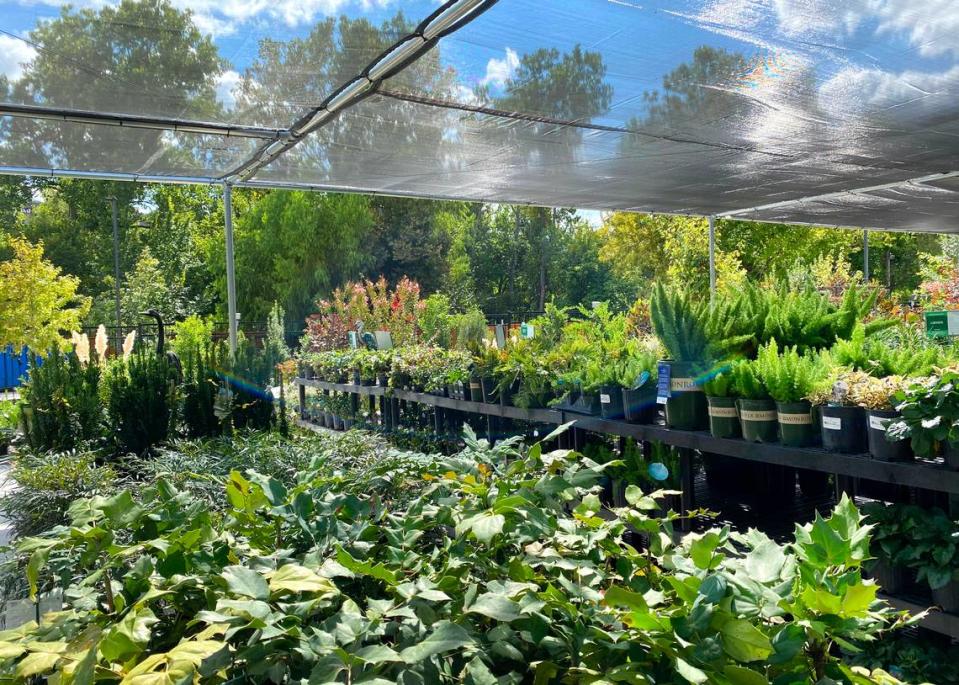As drought rages, here are some water conservation tips for your North Texas landscape
The gentleman asked me about a “No water landscape.” I told him I’d been asked about water conservation. I’d been asked about xeriscaping, even to the point of misspelling it “zero-scaping.” But I’d never been asked about developing a landscape that would use no water at all.
I suggested we strike a compromise. I pointed out that plants are all living beings, and that even the most water-conscious plants on the planet have to have some source of water from somewhere. Perhaps it’s just mist from an ocean spray, but it has to come from somewhere.
So, let’s do that Google-Earth thing and spiral it into North Central Texas. Let’s talk about “here,” in our towns, where we live and landscape.
Yes, we’ve been in an early heat wave. Yes, we’ve had some dry months over the past year (much worse farther west). Let’s focus on ways we can conserve the water we have and share it so that everyone can have a reasonable expectation of an attractive and productive landscape and garden. Here are my Quick Tips to help.
▪ Don’t obsess over “native” plants. Just because a plant is native somewhere in Texas doesn’t guarantee it will grow in our area. Texas is huge and our conditions are diverse.
▪ Choose “adapted” plants instead. It isn’t as critical where a plant originated as it is that it will grow happily in your locale.
▪ For the most part, stay away from plants that need extremes in soil moisture conditions. Unless you have a water garden, avoid plants that require marshy planting sites. Conversely, plants that require arid conditions like West Texas xeriphytes will likely suffer during very wet seasons like 2015.
▪ Plant in raised beds. You can always add water. It’s much more difficult to subtract it.
▪ Don’t pile soil or mulch around trees’ trunks. It makes it very difficult to get water to the plants’ roots.
My best water conservation tips …
▪ Let Texas Certified Nursery Professionals help you choose the best plants for your needs. Let them “own” part of your decisions in plant choices. Let them know that you want plants that are tolerant of heat and drought — not to sell you any sissies. Let them carry part of the responsibilities. They’ll be flattered to help.
▪ Prepare the ideal planting bed for your new landscape. Incorporate generous amounts of organic matter (compost, sphagnum peat moss, well-rotted manure, finely ground pine bark mulch, etc.) into the soil before you plant small and mid-sized species. Larger plants would require too much soil preparation to be practical. Those plants need to be able to survive on their own. Make your plant choices accordingly.
▪ Water your new plants by hand for the first couple of years. Sprinkler irrigation alone won’t be sufficient. It won’t water deeply enough to reach the bottoms of the soil balls of the new nursery stock, or if it does, the rest of your landscape will be over-watered. It’s best to use a hose with a water breaker or water bubbler to soak each new plant deeply every other day from mid-spring until mid-fall.
▪ Convince your HOA that maintenance people also need to water new plants by hand. I had this conversation last Sunday morning on my radio program. My caller didn’t sound convinced so I’m putting it in writing. Re-read the previous tip.
▪ For all plantings, avoid high-nitrogen feedings that would stimulate rampant growth during the hottest parts of the summer. Instead, capitalize on flushes of new growth in spring and fall by doing your prime fertilizing in April and early September.
▪ Put mulches to work. They reduce the soil-to-air contact and in doing so will slow the rate of drying. They suppress the growth of weeds. Weeds use water faster than the “good” plants. They allow irrigation water to soak into the soil without running off. That’s not a huge issue, but it is nonetheless a help.
▪ Water in early morning, late evening or even overnight. I use the app on my phone. If I wake up at night, I know the stations I want to water. Pressure is at its best then, so I can turn the system on and have everything soaked and dried off by the time the sun comes up and beams down on the foliage.
▪ Be sure every part of your sprinkler system is functioning properly. You can fix many of the small things yourself — blocked heads that have branches in front of them, misaligned heads, chewed heads, perhaps even broken pipes. Stuck valves may be more challenging, but don’t sell yourself short. Repair people are days or weeks behind schedule right now. Do as much of the work as you can on your own.
▪ Drip irrigation systems need maintenance, too. Emitters become plugged or get pulled out entirely. Plants outgrow the system’s ability to supply adequate water. Squirrels chew through the lines. You have to fine-tune drip irrigation systems several times annually.
▪ Bags of water positioned to clasp around trees’ trunks really don’t do much to help trees survive. Granted they do let water soak into the soil slowly, but you can do that more efficiently in less expensive ways. Your trees will do much better if you fill their basins with water every couple of days all summer for the first two or three years.
You can hear Neil Sperry on KLIF 570AM on Saturday afternoons 1-3 p.m. and on WBAP 820AM Sunday mornings 8-10 a.m. Join him at www.neilsperry.com and follow him on Facebook.




